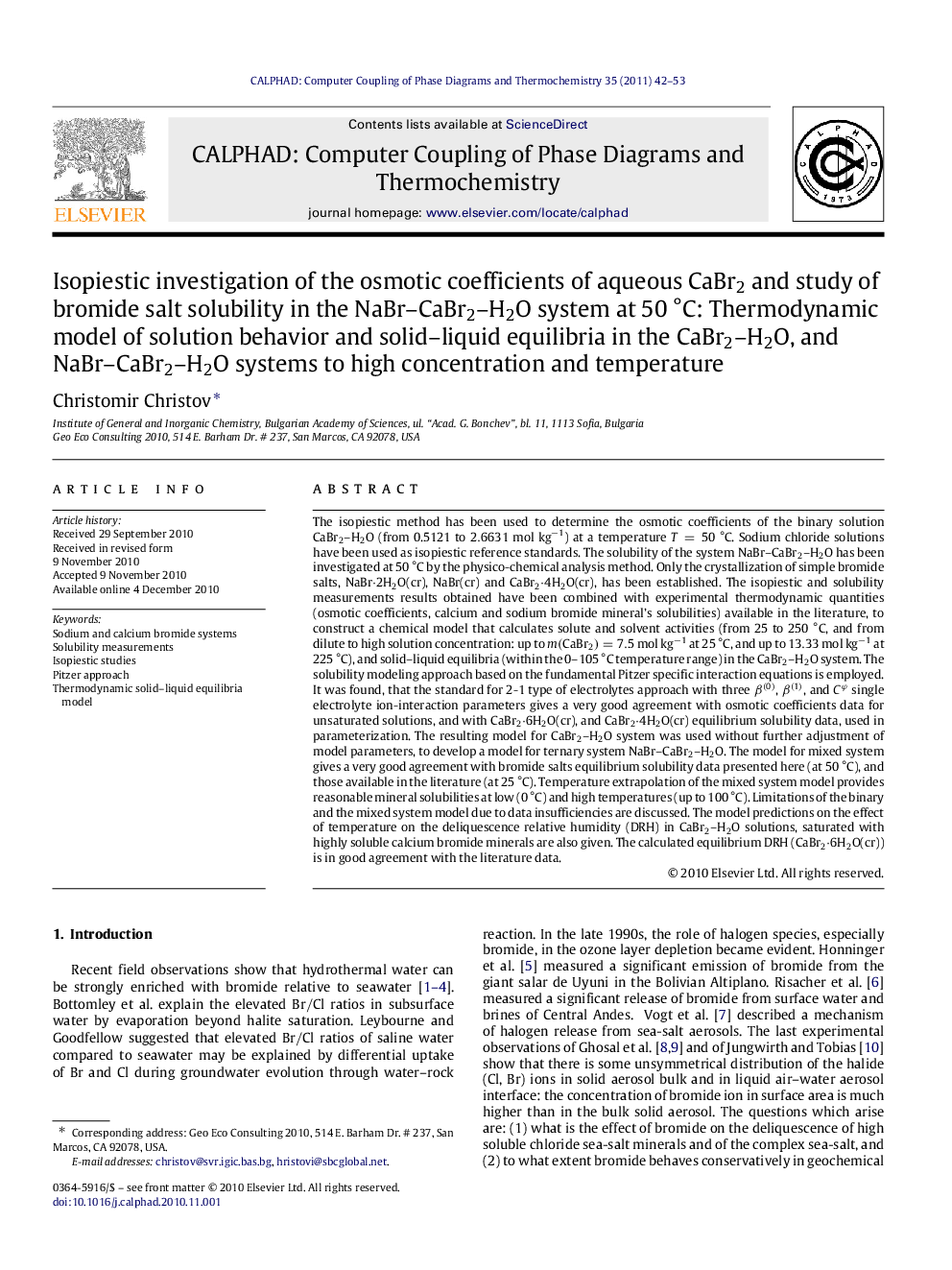| کد مقاله | کد نشریه | سال انتشار | مقاله انگلیسی | نسخه تمام متن |
|---|---|---|---|---|
| 1559094 | 999343 | 2011 | 12 صفحه PDF | دانلود رایگان |

The isopiestic method has been used to determine the osmotic coefficients of the binary solution CaBr2–H2O (from 0.5121 to 2.6631 mol kg−1) at a temperature T=50 °C. Sodium chloride solutions have been used as isopiestic reference standards. The solubility of the system NaBr–CaBr2–H2O has been investigated at 50 °C by the physico-chemical analysis method. Only the crystallization of simple bromide salts, NaBr⋅2H2O(cr), NaBr(cr) and CaBr2⋅4H2O(cr), has been established. The isopiestic and solubility measurements results obtained have been combined with experimental thermodynamic quantities (osmotic coefficients, calcium and sodium bromide mineral’s solubilities) available in the literature, to construct a chemical model that calculates solute and solvent activities (from 25 to 250 °C, and from dilute to high solution concentration: up to m(CaBr2)=7.5 mol kg−1 at 25 °C, and up to 13.33 mol kg−1 at 225 °C), and solid–liquid equilibria (within the 0–105 °C temperature range) in the CaBr2–H2O system. The solubility modeling approach based on the fundamental Pitzer specific interaction equations is employed. It was found, that the standard for 2-1 type of electrolytes approach with three β(0)β(0), β(1)β(1), and CφCφ single electrolyte ion-interaction parameters gives a very good agreement with osmotic coefficients data for unsaturated solutions, and with CaBr2⋅6H2O(cr), and CaBr2⋅4H2O(cr) equilibrium solubility data, used in parameterization. The resulting model for CaBr2–H2O system was used without further adjustment of model parameters, to develop a model for ternary system NaBr–CaBr2–H2O. The model for mixed system gives a very good agreement with bromide salts equilibrium solubility data presented here (at 50 °C), and those available in the literature (at 25 °C). Temperature extrapolation of the mixed system model provides reasonable mineral solubilities at low (0 °C) and high temperatures (up to 100 °C). Limitations of the binary and the mixed system model due to data insufficiencies are discussed. The model predictions on the effect of temperature on the deliquescence relative humidity (DRH) in CaBr2–H2O solutions, saturated with highly soluble calcium bromide minerals are also given. The calculated equilibrium DRH (CaBr2⋅6H2O(cr)) is in good agreement with the literature data.
Journal: Calphad - Volume 35, Issue 1, March 2011, Pages 42–53